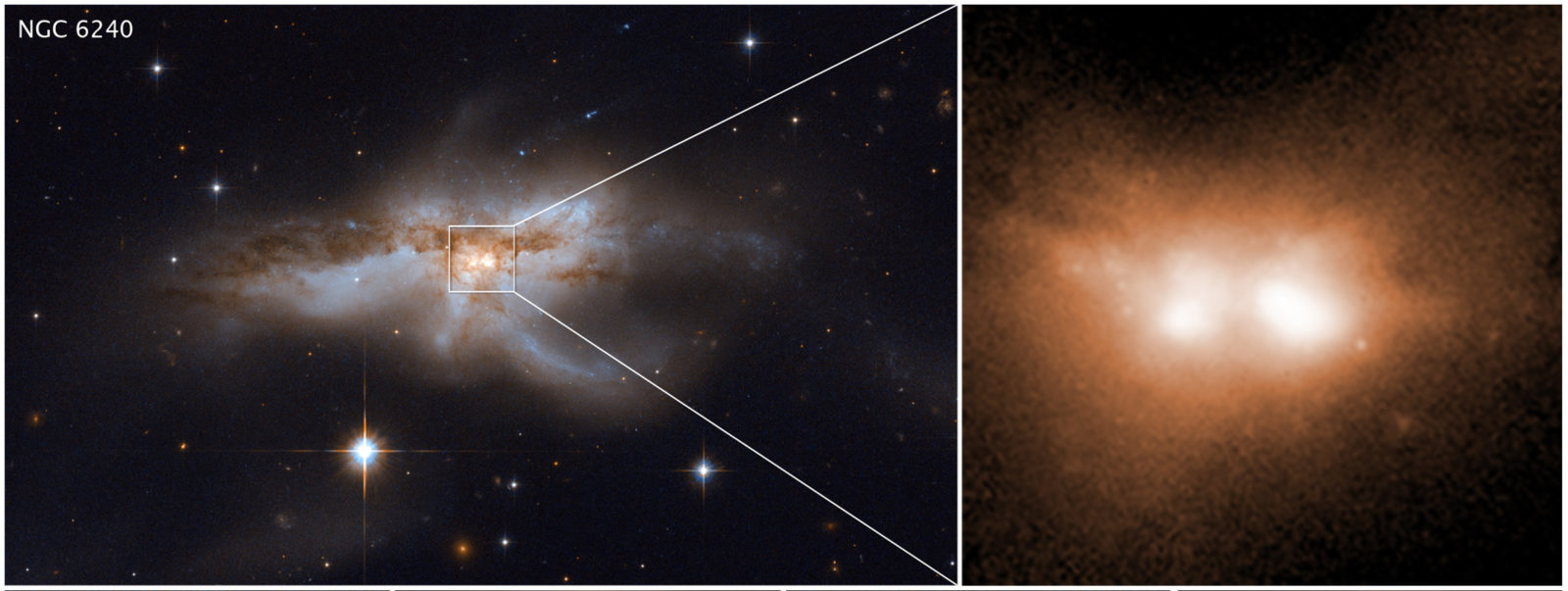These images reveal the final stage of a union between two galactic nuclei in the messy core of the merging galaxy NGC 6240. The image at left shows the entire galaxy. At right is a close-up of the two brilliant cores of this galactic union. This view, taken in infrared light, pierces the dense cloud of dust and gas encasing the two colliding galaxies and uncovers the active cores. The hefty black holes in these cores are growing quickly as they feast on gas kicked up by the galaxy merger. Credit: NASA, ESA, W. M. Keck Observatory, Pan-STARRS and M. Koss (Eureka Scientific, Inc.)
November 7, 2018, University of Maryland
For the first time, a team of astronomers has observed several pairs of galaxies in the final stages of merging together into single, larger galaxies. Peering through thick walls of gas and dust surrounding the merging galaxies’ messy cores, the research team captured pairs of supermassive black holes—each of which once occupied the center of one of the two original smaller galaxies—drawing closer together before they coalescence into one giant black hole.
Led by University of Maryland alumnus Michael Koss (M.S. ’07, Ph.D. ’11, astronomy), a research scientist at Eureka Scientific, Inc., with contributions from UMD astronomers, the team surveyed hundreds of nearby galaxies using imagery from the W.M. Keck Observatory in Hawaii and NASA’s Hubble Space Telescope. The Hubble observations represent more than 20 years’ worth of images from the telescope’s lengthy archive. The team described their findings in a research paper published on November 8, 2018, in the journal Nature.
“Seeing the pairs of merging galaxy nuclei associated with these huge black holes so close together was pretty amazing,” Koss said. “In our study, we see two galaxy nuclei right when the images were taken. You can’t argue with it; it’s a very ‘clean’ result, which doesn’t rely on interpretation.”
The high-resolution images also provide a close-up preview of a phenomenon that astronomers suspect was more common in the early universe, when galaxy mergers were more frequent. When the black holes finally do collide, they will unleash powerful energy in the form of gravitational waves…
Read more at: https://phys.org/news/2018-11-astronomers-pairs-black-holes-centers.html#jCp

